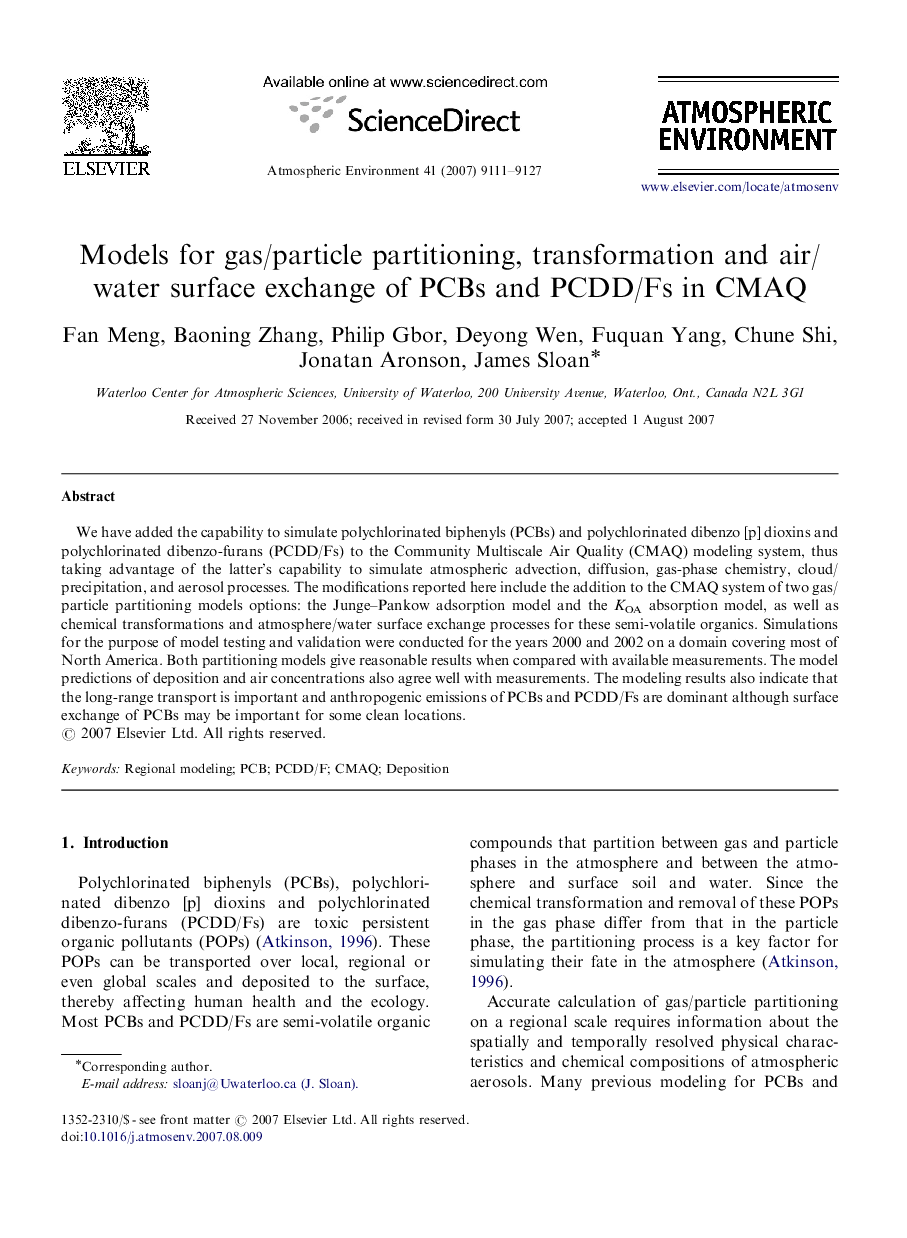| Article ID | Journal | Published Year | Pages | File Type |
|---|---|---|---|---|
| 4443153 | Atmospheric Environment | 2007 | 17 Pages |
We have added the capability to simulate polychlorinated biphenyls (PCBs) and polychlorinated dibenzo [p] dioxins and polychlorinated dibenzo-furans (PCDD/Fs) to the Community Multiscale Air Quality (CMAQ) modeling system, thus taking advantage of the latter's capability to simulate atmospheric advection, diffusion, gas-phase chemistry, cloud/precipitation, and aerosol processes. The modifications reported here include the addition to the CMAQ system of two gas/particle partitioning models options: the Junge–Pankow adsorption model and the KOA absorption model, as well as chemical transformations and atmosphere/water surface exchange processes for these semi-volatile organics. Simulations for the purpose of model testing and validation were conducted for the years 2000 and 2002 on a domain covering most of North America. Both partitioning models give reasonable results when compared with available measurements. The model predictions of deposition and air concentrations also agree well with measurements. The modeling results also indicate that the long-range transport is important and anthropogenic emissions of PCBs and PCDD/Fs are dominant although surface exchange of PCBs may be important for some clean locations.
